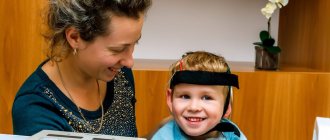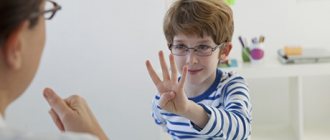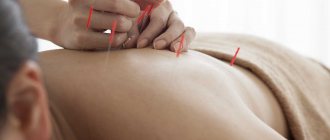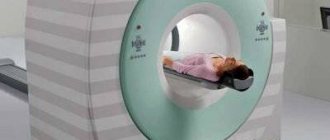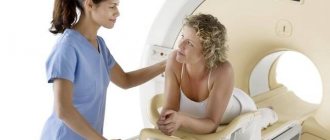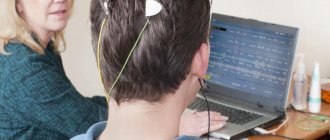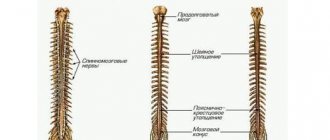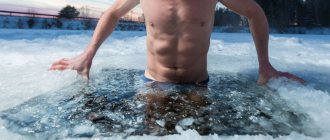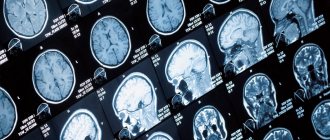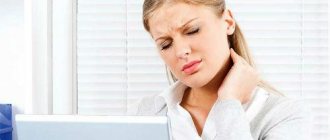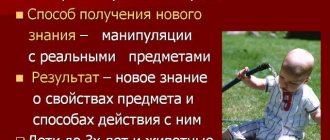Microcurrent skin therapy is a therapeutic physiotherapeutic cosmetic procedure, the essence of which is the effect of electrical impulses on all layers of soft tissue. Weak pulse currents stimulate regeneration and metabolic processes at the cellular level, improve microcirculation, increase local immunity, and promote renewal and rejuvenation of the skin. After a course of therapy, it is possible to get rid of many age-related and dermatological defects and restore the face to a healthy, radiant, attractive appearance.
At the International Hemostasis Clinic, each patient can evaluate the effect of the microcurrent therapy procedure after the first session. Our cosmetologists will individually draw up a therapeutic plan taking into account the individual needs of the skin and the desired effect. All manipulations are carried out using modern high-tech equipment, which guarantees high results and no side effects.
What is microcurrent therapy
Microcurrent facial therapy is prescribed to patients with dry, aging, aging skin. The procedure will help in the shortest possible time to get rid of wrinkles, acne, pigment and stagnant spots, as well as other age-related defects that cause aesthetic discomfort.
The essence of the technique is the therapeutic effect of electric current on all layers of soft tissue. The procedure is carried out using special equipment. Generating currents of ultra-low amplitude and low frequency. The soft, delicate effect of microcurrents at the intracellular level helps to accelerate blood and lymph microcirculation, as well as activate metabolic and regenerative processes. The results of such a beneficial effect are undeniable:
- regeneration and restoration of soft tissues at the cellular level;
- improving muscle tone and relaxing tense muscles;
- activation of metabolic processes;
- improvement of lymph outflow;
- pronounced lifting effect;
- deep nutrition and hydration of the dermis;
- correction of unevenness, sagging;
- normalization of the activity of the sebaceous glands;
- narrowing the porosity of the skin;
- stimulation of local immunity;
- strengthening the walls of blood vessels, increasing elasticity and conductivity;
- normalization of melanocyte production;
- even out skin tone.
Indications for microcurrent therapy
Microcurrent therapy is carried out according to medical indications, so you first need to make an appointment with a cosmetologist who will conduct an initial examination and evaluate how advisable it is to resort to this procedure.
Indications for microcurrent facial therapy are:
- dryness, sagging, decreased skin tightness and elasticity;
- the appearance of extensive acne;
- rosacea;
- progression of dermatosis, atopic dermatitis;
- mimic and pronounced age wrinkles;
- unhealthy, dull complexion;
- pigment and stagnant spots;
- muscle hypertonicity;
- damage to skin blood vessels;
- puffiness, bags and dark circles under the eyes;
- change in microrelief;
- drooping oval face;
- pronounced signs of photoaging.
It is recommended for patients over the age of 25 to resort to a rejuvenating procedure using microcurrents. It is during this period that the first, barely noticeable signs of age-related changes appear, which can be prevented by enrolling in a course of therapy consisting of 6 to 8 sessions.
Contraindications
Despite the fact that microcurrent therapy is considered a safe, painless treatment procedure, it still has its contraindications, which, if ignored, can lead to serious consequences. To exclude or confirm contraindications, the doctor gives a referral for laboratory and instrumental diagnostic examination, which will help identify hidden pathologies for which it is prohibited to resort to the technique.
Physiotherapeutic treatment with microcurrents is not prescribed to patients with the following diseases:
- neoplasms of malignant and benign nature;
- acute infectious and inflammatory processes;
- diseases of the central nervous system;
- chronic cardiovascular pathologies;
- acute cardiac, renal failure;
- diseases of the hematopoietic system;
- varicose veins, thrombophlebitis;
- history of stroke, heart attack;
- severe mental disorders;
- endocrine, hormonal disorders.
The technique is contraindicated for pregnant and breastfeeding clients, clients with a pacemaker and other metal implants, including piercings installed in the area of intended impact.
Possibilities of a salon microcurrent facial procedure
Those who have tried this technique on themselves claim that they not only acquired a healthy, thriving appearance, but also began to feel much better than before.
This happens because:
- Metabolism accelerates, and, therefore, the healing of the body occurs many times faster.
- The skin receives the necessary nutrition and care at the cellular level, which directly affects its appearance.
- Blood circulation is normalized.
- The skin becomes clearer, acne and clogged pores disappear.
- The swelling subsides and all excess fluid comes out.
- Due to the acceleration of metabolism, fat deposits in the form of a double chin disappear.
- The facial contour becomes more pronounced and defined, the muscles become toned.
How is the procedure performed?
Microcurrent therapy with microcurrents should be carried out in specialized beauty salons that have permission to provide this type of service. The cosmetologist performing the manipulations is obliged to provide the client with a certificate confirming his qualifications.
Before starting the procedure, make-up is removed and the skin is thoroughly cleaned of impurities. Next, the cosmetologist applies a conductive gel to the face, which enhances the healing effect of electrical impulses.
Therapy can be carried out in two ways:
- Electrodes with galvanic or other tips. Before the session, the cosmetologist, taking into account the individual needs of the client’s skin, selects the optimal strength of the electrode. Then the skin is additionally treated with a special protective substance that prevents irritation. During the therapy, the specialist makes the necessary movements with the electrodes, treating problem areas. The duration of the procedure is 35 – 40 minutes.
- Special gloves to which the electrode is connected. Microcurrent facial therapy with gloves is considered the most effective and useful procedure, providing a pronounced therapeutic and rejuvenating result. Before the manipulations, a warming mask is applied to the client’s face, and on top of it is a special film that enhances the effect of currents. After this, the cosmetologist performs a manual facial massage, wearing special gloves on his hands to which electrodes are connected. The second electrode is placed in the client's hands.
Types of microcurrent therapy
To correct cosmetic and dermatological defects of the facial skin, the following types of microcurrent therapy are used:
- Disincrustation. Prescribed to patients with problematic, oily dermis prone to inflammation and rashes. The procedure helps to cleanse contaminated pores, soften and remove sebaceous plugs, normalize the functioning of the sebaceous glands, and destroy pathogenic microflora.
- Lymphatic drainage. The main goal of the technique is to normalize the water and oxygen balance of the skin, improve metabolism, accelerate the elimination of toxins and waste, eliminate swelling on the face, get rid of dark circles and bags under the eyes.
- Reprogramming of facial muscles. The therapy effectively trains the facial muscles, promoting their relaxation or, conversely, tension. After a course of procedures, facial wrinkles disappear completely or become less noticeable, and the oval of the face is tightened.
- Lifting. The technique is aimed at strengthening and toning the skin, providing a pronounced lifting effect, and combating the first signs of age-related changes. After just a few sessions, the microrelief and color are evened out, the double chin and jowls disappear.
- Ionic mesotherapy. The procedure helps to get rid of wrinkles, swelling, bags under the eyes, age spots, congestive spots, and other age-related defects in the shortest possible time. After a course of therapy, regeneration processes are activated, metabolism improves, and local immunity increases.
Is it autism? Misdiagnosis of autism.
There is also an opinion that many children diagnosed with autism incorrectly - this is called overdiagnosis.
So if a child has brain damage caused by intrauterine infection (for example, cytomegalovirus infection), prematurity, birth asphyxia, birth trauma, intracranial hypertension, etc. then his external manifestations will be similar to autism. With the use of modern comprehensive rehabilitation methods, autistic manifestations begin to gradually smooth out and not a trace of “autism” remains. And then there is a long period of work to restore the child’s psycho-speech development.
Children with autistic manifestations (against the background of organic brain damage) can be brought to NORMAL.
Comment from Doctor of Medical Sciences, Leading pediatric neurologist of the central Samara department of REACENTR, Tatyana Alekseevna Gavrilova:
The development of the brain of an autistic child has its own characteristics:
1. The frontal lobes of the brain are responsible for consciousness, intelligence, logical thinking and initiative. In children with autistic manifestations (autism), as a rule, the activity of the frontal lobes is sharply reduced. Therefore, in children with autism, cognitive activity is severely reduced, detachment is expressed, and there is no interest in the environment. Impaired logical thinking in children with autism syndrome leads to a lack of understanding of current events; it is for this reason that autistic children are afraid of everything new and unusual (changes, new surroundings, new toys, new food, new people), since they do not understand: what it is, where did it come from and why is it needed.
2. Normally, the frontal lobes control and direct all other areas of the brain (speech, motor, sensory (hearing, vision), speech, etc.).
- For example: a small child climbed into a closet and scattered books on the floor (the frontal lobes, out of curiosity, gave the command to the motor zones to crawl to the closet and pull the books out of the closet, the visual zones to see what was inside on the pages - after cognitive interest was satisfied, books and closet became uninteresting to the child and he went to other objects in the room).
However, in autistic children, the frontal lobes “sleep” and do not direct other areas of the brain to study the surrounding reality. That is why the activities of an autistic child are stereotypical. Stereotypes - repeatedly repeated, unconscious, aimless actions (shaking hands, pouring sand, mechanically turning pages, etc.)
3. In order to talk, you need a close relationship between the frontal lobes and the speech areas of the brain. After all, everything we say is said consciously. In ordinary children, a desire first arises (I want “candy” or I want to “go for a walk”) - it is the frontal lobes that come up with the “task”, and the speech areas of the brain implement it - the child makes a request or demands.
In an autistic child, the frontal lobes “sleep” and do not give the speech zones “tasks.” As a result, a child with autism does not understand spoken language; does not realize that they are addressing him; does not try to make requests, an autistic child simply does not understand that you can ask and get what you want. Speech is absent or becomes stereotypical, for example, a child with autistic manifestations repeats words or even entire sentences aimlessly, without understanding the meaning of the spoken words (like memorized foreign words).
4. Many autistic children experience auto-aggression - the autistic child directs aggression towards himself (hitting himself or biting himself). There are two reasons for this: the child is angry that the surrounding reality does not meet his needs (for example: he wanted to roll the car in the usual stereotypical way, and his mother makes him repeat the words after her, the child begins to bite his hand or hits himself in the face, not understanding that the protest can be expressed in words). This is auto-aggression. But it also happens that auto-aggression is just a “mask”; in fact, the child has a headache. He is unable to endure, does not understand that he can complain to his parents, and hits himself on the head (headaches, as a rule, are observed in children with damage to the nervous system due to hydrocephalus). At the same time, the veins on the temples are clearly visible in children, they are capricious, and have a pained expression on their faces.
5. Autistic children, as a rule, have high activity in the visual areas of the brain. That is why they have a very good visual memory (it is also called “photographic”) and express a love of “contemplation.” The games of a child with autism are aimed at contemplation: autistic children examine the fingers of their hands, or throw objects and watch them “fall beautifully”; they can spend hours watching the same moment in their favorite cartoon as a “beautiful dynamic picture.” The modern iPad is the favorite item of an autistic child, because it is literally created for contemplation and is a kind of help for autism...
6. A child with autistic manifestations very often exhibits emotional disturbances. So what is their reason?
Emotions can be divided into primitive emotions and complex social emotions.
- primitive emotions are necessary for survival in nature: aggression, fear. For example, in a critical situation you need to get scared and run away cowardly, or aggressively rush at the enemy, and the mid-brain structures are responsible for these primitive emotions.
- complex social emotions - love, care, sense of humor, shyness, envy, etc., the frontal lobes are responsible for these emotions. In an autistic child, the frontal lobes “sleep” and there are practically no complex emotions, which is why the child does not “experience” affection and tenderness for loved ones, and most importantly, for parents. A child with autism does not understand jokes and has difficulty adapting to society. But the “mid-stem” structures, on the contrary, are disinhibited and therefore primitive emotions - fear or aggression (auto-aggression) - predominate in the behavior of an autistic child.
Recommendations for microcurrent treatment
A physiotherapeutic treatment procedure using microcurrents is suitable for patients of any age, however, before resorting to the technique, it is necessary to exclude contraindications.
No special preparation is required before manipulation. Initially, you need to visit a cosmetologist who will identify skin defects, determine what type of microcurrent therapy is appropriate to use in a particular case, and then prescribe the duration of the course.
During the course, it is advisable for the patient to drink at least 1.5 - 2 liters of fluid per day, avoid salty, spicy, fatty foods, and abstain from caffeine-containing and alcoholic beverages. To consolidate the results, 1 - 1.5 months after completing the course, it is advisable to repeat the procedure by attending 1 - 2 sessions.
To achieve the most positive effect, it is necessary to undergo a full course of therapy, the duration of which depends on the patient’s age and the condition of the skin:
- Young girls aged 25 - 30 years. The technique is prescribed to prevent age-related changes. However, the course does not last long and includes up to 5 sessions.
- Women aged 35 – 40 years. To eliminate the first signs of skin aging, it is recommended to take a course consisting of 5 – 6 sessions, which are carried out once a week.
- Ladies aged 45 - 50 years. The course is extended to 8 – 12 sessions, with a break between them of about 3 days.
- Women after 50 years. Here, the duration of therapy is determined by the cosmetologist personally, taking into account the needs of the skin and the desired effect. The interval between sessions is 1 – 2 days.
Benefits of Microcurrent Therapy
The effect of microcurrent therapy can be assessed after the first visit to a cosmetologist. But the advantages of the procedure are not limited to this. Its main advantages:
- painlessness and safety;
- wide range of uses;
- good tolerance;
- almost complete absence of side effects;
- the opportunity to significantly improve and rejuvenate the skin without resorting to plastic surgery;
- complex impact and treatment of all layers of the epidermis.
Another significant advantage is that the technique goes well with a number of other cosmetic procedures aimed at healing and rejuvenating facial skin. Microcurrent therapy is perfectly complemented by:
- alginate masks;
- ELOS rejuvenation and other hardware procedures;
- peelings, scrubbing, masks, etc.
Disadvantages of microcurrent therapy
The disadvantages of the procedure include:
- a large list of contraindications;
- relative high cost;
- the need to complete a full course, which may include 5–12 sessions.
Possible side effects and complications
Undesirable effects include slight redness and itching in places where the electrodes touched the skin. This complication most often develops in people with a low pain threshold or individual intolerance to electrical currents. During the session, the client may experience flashes in the eyes. They are absolutely harmless and do not affect the visual system in any way.
In the first few hours after the manipulation, the patient may be bothered by a slight tingling of the areas exposed to microcurrent, as well as an unpleasant metallic taste in the mouth. These symptoms disappear on their own and do not require special treatment.
Microcurrent procedure at home
Microcurrent therapy, due to its complete safety, can be easily performed both in the salon and at home. All the necessary devices and products can be easily found in specialized cosmetic stores, saving your budget several times. The price of the procedure in this case will be quite affordable.
But do not forget that devices for home use are significantly inferior in power to salon ones. Therefore, if you decide to practice microcurrent therapy on your own, increase the number of sessions several times.
When performing the procedure at home, the sequence of actions remains unchanged:
- First, remove makeup and cleanse the skin.
- Apply contact gel containing hyaluronic acid.
- Using a special apparatus, we begin the procedure itself.
At the end of the course of microcurrent therapy, there are no traces, redness or other side effects left on the skin. There are also absolutely no restrictions on makeup, no need to take additional medications or follow strict instructions.
Read material on the topic: Modeling the oval of the face: methods, possible effects, advantages of the procedure
Cost of microcurrent therapy
The price for one session depends on the type of procedure and can range from 1,200 to 1,500 rubles. To get a detailed consultation or make an appointment with a specialist, contact us by phone or fill out the online form on the website. As soon as our administrators see your request, they will immediately call you back and answer all your questions.
Non-surgical facelift
Ultrasonic facial cleansing using Gezatone device
Oxygen rejuvenation Intraceuticals
CHILDHOOD AUTISM
Some “luminaries” of psychiatry claim that autism in children cannot be treated. But the experience of parents says the opposite. In many children, against the background of modern treatment methods and remedial classes, the manifestations of autism are gradually smoothed out. In a child diagnosed with autism, excitability and stereotypic activity decrease, speech and social skills begin to develop. And if it is impossible to “cure autism,” then improving behavior, developing speech and socially adapting the child is not only possible, but also NECESSARY. Signs of autism in children that lead to the diagnosis (syndrome) of autism:
1. Detachment. A child with autism seems to be in his own world, is not able to make contact, cannot and does not try to ask for what he needs, is attached to his mother in everyday life or emotionally (for example, he cannot eat and dress himself or communicates only with the mother, but avoids strangers), however, the autistic child may avoid physical contact (for example, does not allow himself to be hugged). Autism in a child is often manifested by impaired eye contact (children do not make eye contact and even deliberately look away or turn away if you try to catch his gaze).
2. Speech disorder. Speech disorder. Children with autism either do not speak at all, but only shout out inarticulate sounds (vocalisms). Or they only speak individual words, repeating them as if in an echo behind their parents or TV (this is called echolalia), without understanding the meaning; other autistic children have template phrases (the child pronounces this phrase correctly and it can be close to the situation, for example: “give me salad” - asks for food, but not a salad at all, “end of the movie” - tired of your presence and wants you to leave and many more similar phrases). Some children with autism can pronounce entire sentences in a pattern and even retell entire fairy tales, but do not answer questions or engage in dialogue. All of the above is usually called a disorder of speech and its communicative function. In mild cases, a child with autism speaks, but does not use personal pronouns (for example, an autistic child says to himself: “the boy wants to eat”).
3. Violation of mental and speech development. Disorders of mental and speech development. Almost all children with autistic manifestations have impaired mental and speech development. The degree of developmental delay is very individual and depends on the form of autism (for example, with Kanner syndrome in children there is a very severe developmental delay, and with Asperger syndrome, on the contrary, intellectual development can be almost normal). In early childhood autism (ECA), the baby first developed correctly, and then the skills “disintegrated” under the influence of various negative factors (according to the observations of parents, the cause of the disintegration in their autistic children was: DTP vaccination, large-area burns, anesthesia during a serious operation, extremely painful procedures carried out in a hospital, serious stress or fear - for example, burglars broke into the house and other “extreme” situations). That is, with RDA: before the child spoke, ate himself, played ordinary children's games.... and then I forgot how to do it and stereotypical activities appeared.
4. Violation of social adaptation. A child with autism does not interact with other children and sometimes even avoids them. Violation of social adaptation becomes especially noticeable in kindergarten. When the child was sent to kindergarten, it suddenly turned out that he had autistic manifestations (the child refuses to eat in kindergarten, sits away from the children for hours, does not play with toys with him, does not fulfill the requirements and requests of the teacher, or rather, does not respond to them at all does not react). Some children with autism may also have aggression towards children.
5. Stereotypical activity. Many actions of an autistic child become stereotypical—that is, they are repeated aimlessly. So-called “stereotypes” look different. Some children with autism shake their hands, others run in circles - “manage running”, line up objects in order, pour sand for hours, tear paper into thin strips. There are a great many variants of stereotypies in autistic children, but they are united by fixation and aimless repetition. In the distant 70s, psychiatrists believed that autism in children was a schizophrenia spectrum disorder, so even EDA (early childhood autism) was called early childhood schizophrenia. However, in recent decades, even psychiatrists have recognized that autism in children is not schizophrenia.
Contraindications and restrictions
This method of treatment and rehabilitation has contraindications, but their number is small. It is necessary to take into account all human conditions that can cause a negative reaction to microcurrent exposure.
Microcurrent reflexology is strictly contraindicated in the following cases:
- state of psychosis;
- tumor processes in the body, benign or malignant;
- diseases of an organic nature, liver, heart, lungs, kidneys, if the stage of decompensation has already begun;
- period of bearing a child;
- rapid weight loss;
- acute infectious pathologies;
- after heavy physical activity or a hot bath;
- age over 75 years or infants;
- severe pain of unknown cause;
- chronic infectious processes, such as brucellosis, tuberculosis.
It must be taken into account that there are patients who cannot tolerate treatment with any type of reflexology. In this case, there is a high probability of developing a negative vascular reaction, which can provoke shock, collapse or allergic reactions. In order to avoid such manifestations, it is necessary to carefully study the patient's medical history.
Weakened people with weak immunity are resistant to microcurrent reflexology. This is explained by the fact that the patient has energy deficiency. It is also important whether the patient has vascular sclerosis, excessive body weight and biochemical blood test values.
The effectiveness of therapy depends on the general condition of the person and the degree of development of the pathological process. Hormonal levels also matter for microcurrent exposure. The period of menopause in women, age, as well as previous treatment methods play a critical role in the effectiveness of therapy.
What is important to understand when performing MTRT
Microcurrent reflexology is not a potent treatment and is not usually used as monotherapy. And you shouldn’t expect a miraculous and quick effect from several sessions. To achieve a clinically significant lasting effect, at least 3–5 comprehensive rehabilitation courses are usually required.
In addition, MTRT cannot replace drugs with nootropic, neurotrophic, muscle relaxant, anxiolytic, anticonvulsant, diuretic and other effects prescribed by a neurologist. The use of such drugs is not a contraindication for rehabilitation. But at the time of starting reflexology, the patient must be on an individually selected maintenance therapy regimen. A clinically significant deterioration in the patient’s condition or the appearance of new symptoms during the rehabilitation course is grounds for repeated consultation with the attending physician.
So, microcurrent reflexology is a modern and continuing to develop method of rehabilitation of patients with a variety of neuropsychic disorders.
STC "Reatsentr", a specialist talks about the effects of microcurrent reflexology:
Advantages of the method
The main advantages of microcurrent reflexology:
- painlessness, even infants do not experience significant physical discomfort;
- lack of fear before the procedure, which is non-invasive and does not involve the use of instruments or needles that frighten the child;
- lack of destruction of biologically active points (unlike acupuncture), which maintains the effectiveness of repeated exposures;
- the ability to carry out the procedure in different modes, with selective stimulation or inhibition of certain structures of the nervous and muscular systems;
- recording of individual indicators of acupuncture points during each session, which allows you to analyze and dynamically control the treatment process.
Microcurrent reflexology does not increase the discomfort experienced by the patient and is well tolerated.
Treatment of an autistic child must be comprehensive; correction of autism is possible:
Microcurrent reflexology is carried out according to an individual program, which may include:
1. Activation of inactive frontal lobes in a child with autism:
- to understand current events
- for the development of logical thinking
- to develop conscious initiative
- for the development of complex emotions
- (caring, shyness, compassion, sense of humor, etc.)
- to develop social and everyday skills
- (so that the child can feed, dress and go to the toilet independently)
2. Activation of inactive speech areas of the cerebral cortex in a child with autism:
- to improve speech understanding
- to expand active vocabulary
- to increase speech initiative (desire to make contact)
- to develop the skill of creating speech structures (phrases, sentences)
- to develop conversational speech skills.
3. Activation of inactive areas of the brain responsible for the development of learning skills:
- to increase interest in correctional activities
- (studying with a speech therapist-defectologist the colors, shapes, sizes, names and properties of objects, etc.)
- to develop reading, writing, and counting skills.
- to prepare the child for the learning process at school.
4. Reducing the pathological activity of the mid-stem structures of the brain:
- to relieve aggression or self-aggression, fears and neuroticism.
- to reduce pathological motor activity (stereotypical movements, hypermobility).
5. Relief of intracranial hypertension (reduction of intracranial pressure):
- To stop headaches
- To normalize sleep
- To reduce excitability
Autism (autistic manifestations) - help:
To restore normal brain function to a child with autistic manifestations, systematic sessions with a speech therapist, speech pathologist and child psychologist are necessary. The duration of the Microcurrent Reflexology course is 3 weeks (15 sessions). Corrective classes can be started already during the first course of treatment for autism, and continued at home. Standard breaks between courses of Microcurrent Reflexology:
- between 1 and 2 courses of treatment - 3-4 weeks
- between 2 and 3 courses of treatment - 6-8 weeks.
In between courses of Microcurrent Reflexology, children with autism are selected nootropics, which are nutrition and building material for the nervous system. If necessary, small patients with autistic manifestations are given sedatives (for excitable children) or diuretic herbs (for hypertensive-hydrocephalic syndrome, hydrocephalus). Parents, be careful: Microcurrent reflexology is performed only in REACENTRE clinics.
History of the method
Microcurrent reflexology is based on acupuncture and electrotherapy. They refer to percutaneous methods of therapeutic and adaptive effects on the functional state of various structures and systems of the human body.
Acupuncture is a reflexology originating in China with a centuries-old history; it underlies acupuncture (acupuncture) and a number of other techniques. In this case, the specialist produces a functional effect on certain biologically active points of the human body. As a result, the so-called channels and meridians are stimulated; traditionally there are 12 of them. Some of them coincide with the direction of blood and lymph circulation, others connect the main muscle-tendon zones or correspond to zones of segmental innervation. In European countries and America, this technique was used until the beginning of the 20th century.
In 1913, the work of the American scientist and ENT doctor William Fitzgerald was published, which became the basis for the development of modern reflexology. It indicated the possibility of reducing the severity of pain and improving the functional state of internal organs. W. Fitzgerald, together with Edwin Bowers, developed the first theory of reflexology and compiled a map of the zones of the human body. This work was continued by the American doctor Riley. And the second wave of interest in reflexology was noted in the 30s and 40s of the 20th century.
In the USSR, this treatment technique was actively developed and introduced into clinical practice since 1960. Simultaneously with the expansion of indications for the use of reflexology, there was a search for new, more effective and predictable ways to influence biologically active points. Since the late 80s, the development of electroacupuncture techniques began. Several patents have been issued for inventions related to this field.
The first copyright certificate for a prototype of modern equipment for electroacupuncture was received in the Russian Federation in 1990. Previously patented devices were not widely used. In subsequent years, more advanced devices were developed that make it possible to safely search for acupuncture points and diagnose their condition, and to carry out several options for therapeutic effects.
In 1994, microcurrent reflexology received clinical application: it was included in the list of treatment procedures of the Samara rehabilitation complex “Reatsentr”. This technique has repeatedly undergone clinical trials and testing in various large medical institutions of the Russian Federation. All of them confirmed its effectiveness, safety and promise. In 2004–2010, indications for microcurrent reflexology were actively expanded, and such research work continues to this day.
